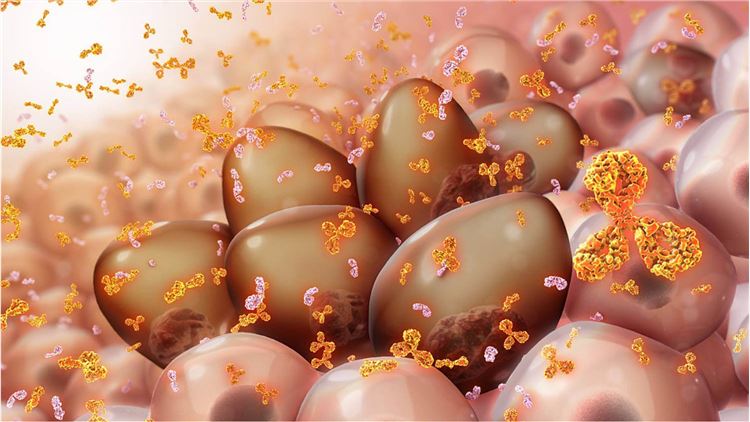With the rapid development of new technologies, numerous antibodies have been developed and used in various areas of clinical research, such as the prognosis, diagnosis, and treatment of different diseases, including myeloma. At Creative Biolabs, you can find the most comprehensive first-rate in vitro diagnostic (IVD) antibody development services for diagnostic uses.
Myeloma, also known as multiple myeloma (MM) or plasma cell myeloma, is a cancer of plasma cells. It is a type of white blood cell which normally is responsible for producing antibodies. Often, it arises without symptoms initially. But, bone pain, bleeding, frequent infections, and anemia may occur when it is advanced. Complications may include amyloidosis. The annual incidence of the United States population is about 4 per 100,000, resulting in around 20,000 new patients in the US. 0.7% of people are affected at some point in their lives. Myeloma is twice as common in black people compared with white people. It usually occurs around the age of 60. Only 2% of the patients are under the age of 40 are diagnosed myeloma. Men have a slightly more chance of catching the disease.
 Fig.1 Myeloma cells. Distributed under CC BY-SA 4.0, from Wiki, without modification.
Fig.1 Myeloma cells. Distributed under CC BY-SA 4.0, from Wiki, without modification.
Molecular Classification
There are several molecular subtypes of myeloma that are associated with several unique differences in disease presentation and prognosis. Trisomic MM is reported to respond particularly well to lenalidomide-based therapy, while t(4;14) MM requires bortezomib-based induction and maintenance for good outcome. As for clinical presentation, t(4;14) MM has a lower predilection for bone disease at diagnosis, while t(14;16) MM is often linked with high levels of serum free light chains (FLC) and a higher risk of acute renal failure at diagnosis.
Staging and Risk Stratification
Although the survival of the patients with MM is approximately 6 years, there are several factors affecting survival rate, including host factors, tumor burden (stage), biology (cytogenetic abnormalities), and response to therapy. Tumor burden in MM has traditionally been assessed using the Durie-Salmon Staging (DSS) and the International Staging System (ISS). Disease biology best reflected based on the molecular subtype of MM, and the presence or absence of secondary cytogenetic abnormalities. The Revised International Staging System (RISS) incorporates determinants of disease biology into the former ISS to create 3 disease stages.
Diagnosis
The most common symptoms of myeloma are fatigue and bone pain. Anemia, a decrease in the total amount of erythrocytes or hemoglobin in the blood, occurs in approximately 75% of patients and contributes to fatigue. Osteolytic skeletal lesions, a softened section of a patient's bone formed as a symptom of myeloma, can be found in approximately 80% of patients. Other common findings include hypercalcemia (15%), and elevated serum creatinine ≥2 mg/dL (18%). Approximately 1% of patients with myeloma have extramedullary disease (EMD) at the time of initial diagnosis, while 8% develop EMD later on in the disease course.
Creative Biolabs has been an incontestable global leader in the development of high-quality antibodies for research, diagnostic, and therapeutic applications. Supported by our powerful IVD platform, we are fully equipped to offer a full range of IVD antibody and immunoassay development services. Please feel free to contact us for more details.
Our services target the following biomarkers for Myeloma diagnosis:
For Research Use Only.

